Kinaray-a is an Austronesian language spoken mainly in Antique Province in the Philippines. It is also spoken in Iloilo province, the south of Capiz Province, and certain villages in Mindanao that trace their roots to Antique Province or Kinaray-a-speaking areas of Iloilo and Capiz Provinces. Mariit is an interior upland Kinaray-a barrio, part of the poblacion of Dao, situated in the southern part of Antique province on Panay Island. It is a settlement composed of 150 households distributed in the barrio proper and its two sitios, Mariit Takas and Bariwbariwan. Its original inhabitants came to the village about seven generations ago to start farm settlements. These people were mostly from the towns of San Joaquin, and Miag-ao of Iloilo and Dao, Antique. The following outlines some beliefs they have about their surrounding mountains.
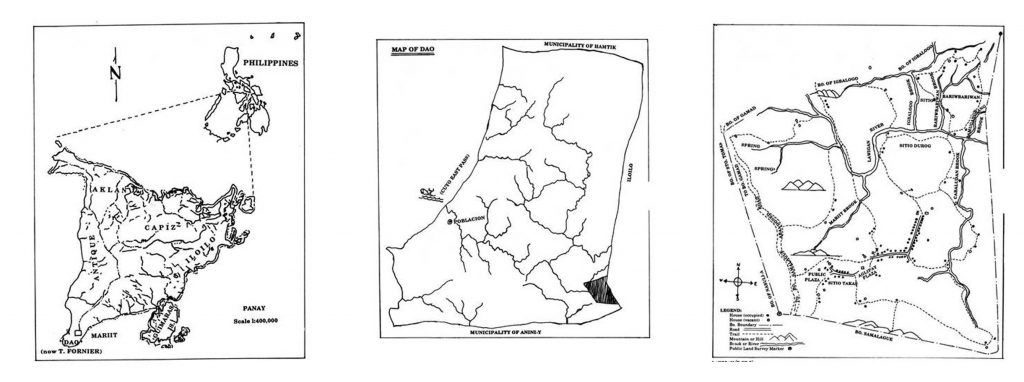
Panay—The “Sacred Center” and the “Four Pillars”
The earth’s surface layer is the center of the world. This center is identified with Panay, a place where the ma-aram (medicine men), their kin and their deceased ancestors live. In Panay are supposedly located the sacred “Four Pillars” of the world (Apat ka Kaharigi ka Kalibutan). These are in the towns of Dao (Antique), San Remigio (Antique), Anini-y (Antique), and Tubungan (Iloilo). The sites are outside the poblacion proper, near or on mountains or hills where springs are located. The site in San Remigio is some seven kilometers outside the poblacion near a spirit-inhabited cave while the site in Dao is the interior barrio of Danawan beside a spring near the mountains. In Anini-y, the place is Punta Nasug, a spirit-inhabited mountain near the shoreline. The Tubungan site is on the mountain of Bala- bago where the Balabago stream passes through. These places are all spirit-inhabited areas. All of these sacred sites are believed to be the places where the Mariitnon ma-aram ancestors used to annually perform the samba (communal ceremony). There, they would ask for rain in order to start planting rice. To do this, a ma-aram would offer a pig as a sacrifice; he would also pray, chant and dance.
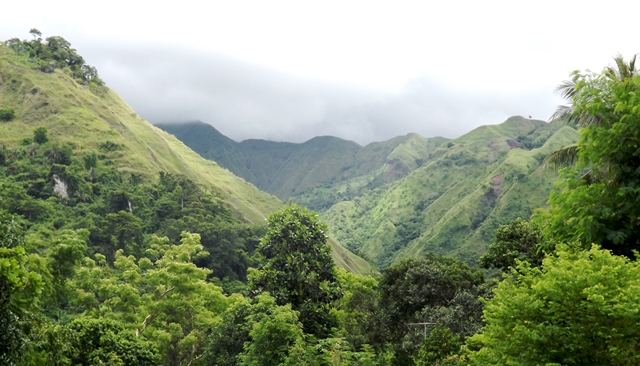
Today, the progeny of these ancient ma-aram would go to Balabago Hills to perform the samba to ask for rain, to give thanks for the good harvest, to ward off evil spirits that would bring illness and pests to plants and animals, and to pray for good health. The most famous ma-aram ancestors who made the trips to Balabago to do the samba were Estrella Bangotbanwa and Eulogia (“Oloy”) Serdena. Estrella is believed to be the progenitor of present-day ma-arams as well as ma-aram “initiates.”
Oloy, who is also believed to have come from the same genealogical line, is the grandmother, great-grandmother or distant kin to many practicing ma-aram in Mariit and of the Bangotbanwa followers in the adjacent barrio of Gamad.
Sacred Mountains
Several mountains in Panay are considered sacred since they have been consecrated for religious purposes. These are Punta Hagdan (Dao, Antique), Mount Aliwliw (Dao, Antique), Punta Nasog (Anini-y, Antique), Mount Igbiga (San Joaquin, Iloilo), Mount Balutinaw (near Mt. Baloy, Central Panay), and Mount Inturayan (Miag-ao, Iloilo). Most of these places were samba sites of the ma-aram of long ago and are still being used for the same purpose. A few may not be actively used as samba sites, but are also considered sacred because these are spirit-inhabited places, being homes of the engkantu. All of these places are sites of panumpa, the act of gathering medicinal herbs, barks and roots of plants during Holy Week, from Holy Wednesday to Good Friday
Interestingly, the seven sacred mountains are believed to be linked to each other by subterranean caves, with its entrance at Punta Hagdan (Dao, Antique), which is located in the eastern shorelines of the southern tip of Antique. The tunnel leads to mountains in Southern Panay and going outward to the eastern coast of the island which is linked to the next island of Negros by another underground passage. This goes all the way to Mount Kanlaon in interior Negros island. The “seven rooms” (pito sa kuarto o hulot) mentioned by the ma-aram in Mariit correspond to the seven-cave compartments where the dungan (soul) of a person is kept by an engkantu in case of soul capture or soul loss.
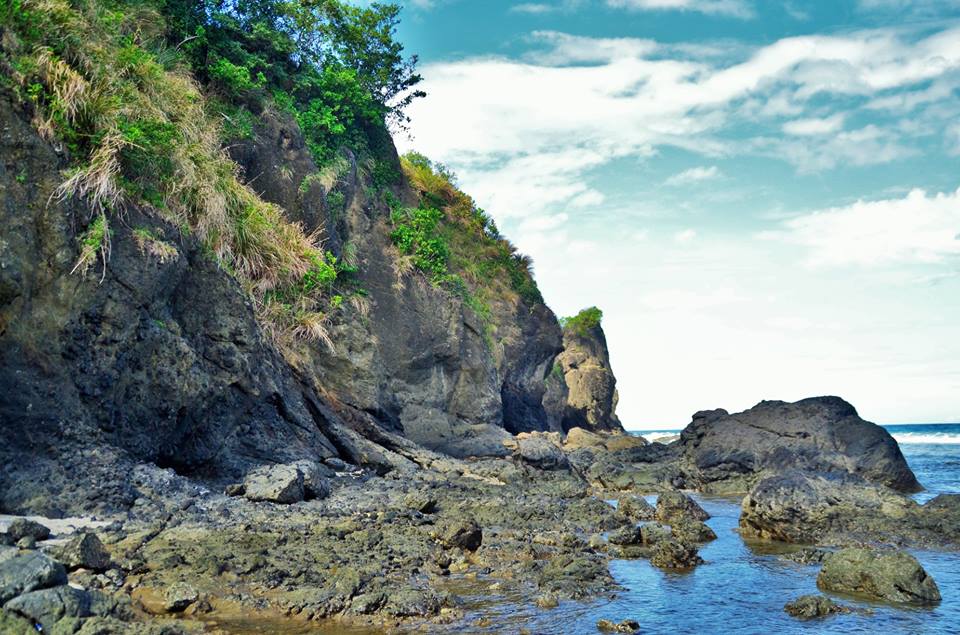
Punta Hagdan, the entrance to the seven caves, is mentioned by ma-aram in Mariit as the place where the engkantu imprisoned a captured soul resulting in the illness of a person. It is much easier for a ma-aram to retrieve a soul kept in the first, second, or third compartment (cave), but it is extremely difficult (if not impossible) to get back the soul once it is kept in the seventh cave. Once there, only a high caliber ma-aram can retrieve it because it is guarded by the ferocious dog of Mulang, an engkantu who lives in the interior portion of the cave.
Certain mountains, caves, rivers and springs in Panay appear to have a sacred nature in that they all lead to a place called Muroboro, which is assumed to be situated in the central part of Panay. There, the souls of the dead (kalag) convene after a long travel via the bodies of water starting from the nearest river or spring in the deceased man’s village and crisscrossing to follow the route which ends in Muroboro Spring. Thirsty from the long journey, the souls of old people take a drink while the souls of the babies take a bath before they finally go to their destinations in heaven.
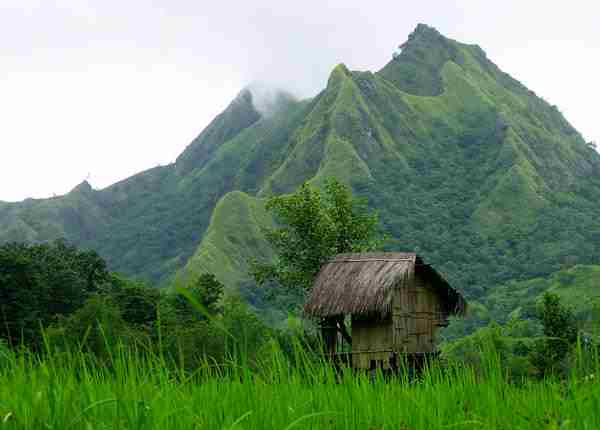
Mount Kanlaon—”City of Engkantado”
Mount Kanlaon, located in the neighboring island of Negros, is the highest mountain peak in the Visayas. It stands out in ma-aram folk stories as an important place, due to its being considered as a metropolitan city of the engkantados. It has an altitude of 2,450 meters. It is located in the northern portion of Negros near the political boundary of Negros Occidental and Negros Oriental. It is also an active volcano and a beautiful sight, especially in the morning when the fog slowly drifts away and this stately volcano appears from a distance. But apart from its beauty, this volcano is believed to be sacred and formidable. According to a ma-aram, the American soldiers wanted to bomb this place during World War II, but their plan was thwarted. They were answered by a threatening note from the engkantu that the latter’s retaliation would mean total disaster to the Americans.
Geographically, Negros Island where Kanlaon stands appears to have been torn off from a part of Panay because the western side of the sock-shaped island fits into the eastern side of Panay. It is only two hours by boat to Iloilo. Demographically, the island was first inhabited by migrants from Panay Island who kept on coming over the years as permanent settlers or as seasonal workers. Historical sources state that before the seventeenth century prior to the coming of the Panaynons to Negros, the latter was only inhabited by small, dark-skinned people. That the engkantu from Kanlaon, so stories say, often come to Panay (and vice versa) to visit their relatives is a mirror of the kinship affiliation of the people between the two islands.
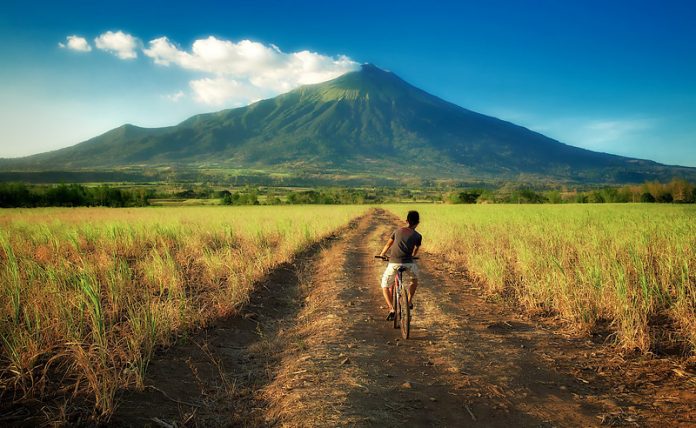
SOURCE: THE ENDURING MA-ARAM TRADITION: An Ethnography of a Kinaray-a Village in Antique, Alicia P. Magos, New Day Publishing, 1992
ALSO READ: Panay’s Babaylan: The Male Takeover
Jordan Clark is a Canadian born descendant of Scottish immigrants living on the homelands of the Lekwungen speaking peoples. His interest in Philippine myth and folklore began in 2004. Finding it difficult to track down resources on the topic, he founded The Aswang Project in 2006. Shortly after, he embarked on a 5 year journey, along with producing partner Cheryl Anne del Rosario, to make the 2011 feature length documentary THE ASWANG PHENOMENON – an exploration of the aswang myth and its effects on Philippine society. In 2015 he directed “The Creatures of Philippine Mythology” web-series, which features 3 folkloric beings from the Philippines – the TIKBALANG, KAPRE and BAKUNAWA. Episodes are available to watch on YouTube. Jordan recently oversaw the editing for the English language release of Ferdinand Blumentritt’s DICCIONARIO MITOLÓGICO DE FILIPINAS (Dictionary of Philippine Mythology) and is working on two more releases with fellow creators scheduled for release later this year. When his nose isn’t in a book, he spends time with his amazing Filipina wife of 20 years and their smart and wonderful teenaged daughter.


